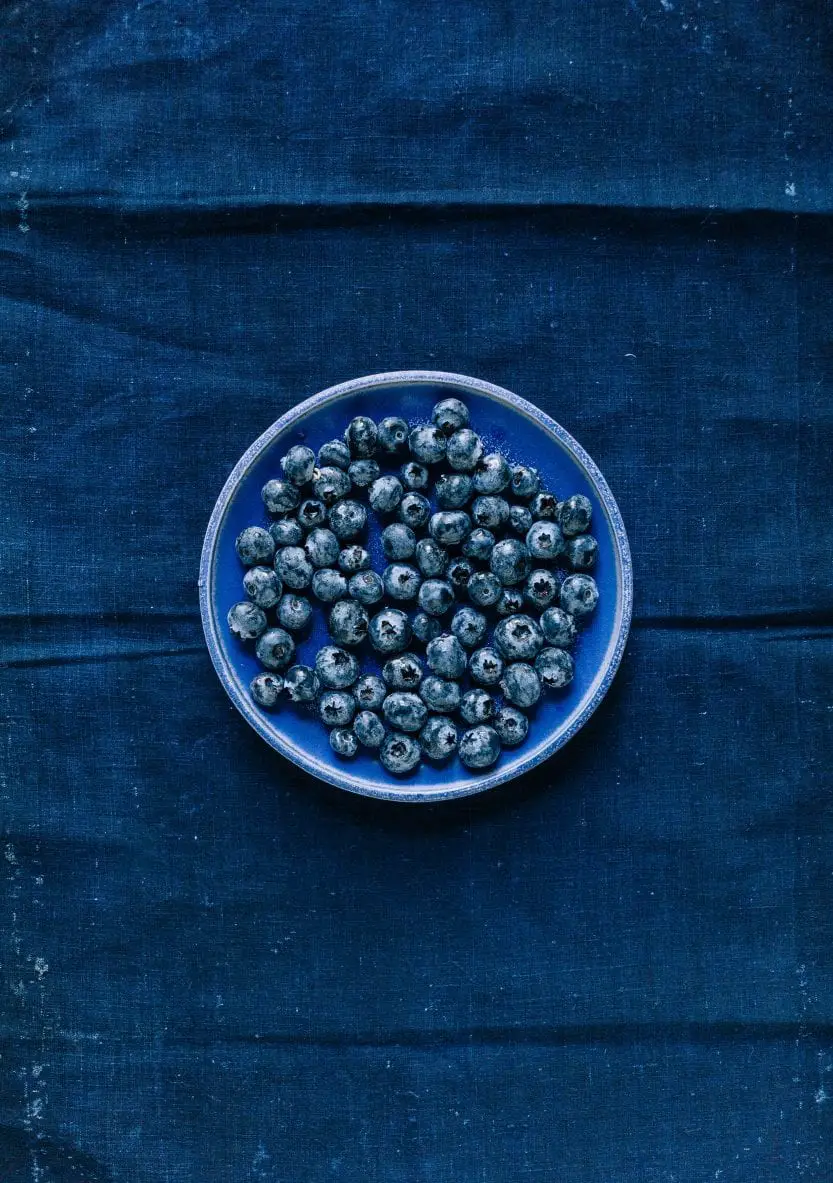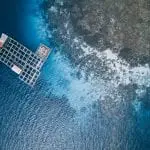Indigo, the bewitching blue dye is extracted from the Indigofera plants- a family of roughly 750 shrub species found in tropical and sub- tropical regions of the world. The word indigo traces its origins from the Greek word indikon which translates to ‘Indian’, indicating India to be a prominent source of indigo for the Greeks. However, it was also naturally cultivated in diverse areas like China. Japan, Egypt, parts of Africa and South Carolina.
Italian merchants first encountered indigo during the Crusades in the flourishing markets of the Middle East, who in turn obtained the dye from East Asia. From 1498 onwards, it became easier to obtain indigo as a sea route was discovered to India. So now, the Italians started importing even greater quantities of indigo to Northern Europe. The Indian indigo was found to be of a far superior quality than the local variety called woad. Needless to say, local woad producers felt quite threatened by this hugely popular import and termed it as ‘the devil’s dye’.
Now ubiquitous, Indigo was once a highly prized pigment available only to the rich and powerful. Aptly referred to as ‘the blue gold’ the demand for this vegetable dye fueled several trade wars. It also enriched many empires, and left an indelible mark on the histories of many colonies where it was cultivated. From the laborious fermentation process to the innovative synthetic process, indigo dyeing has a rich history worth delving deep into.
The Natural Process of Indigo Dyeing
Indigo plants consist of a solitary stem which supports oval, deep green leaves and clutches of red flowers. The dye is obtained from the leaves through the arduous and smelly process of fermentation. Written records dating back as early as the 18th century describe this fermentation process in significant detail. The harvested indigo crop would be submerged in huge containers filled with water. Wooden logs would then be kept atop these containers to thoroughly press the crop inside. This would initiate the process of fermentation- the water would begin boiling and turning blue. This blue liquid was then drained into another container to separate out dirt and other debris that might have gotten into the mixture.
This repulsive smelling blue water was then mixed around with specially constructed paddles to further separate the plant from the pigment. Now a third container was employed to store this clear blue liquid. It was allowed to sit in here till the indigo contained in it settled down. Then the water was drained out and the indigo set aside to dry. The final products were small blue objects which could be grated to get the wonderfully blue dye.
Indigo differs from other natural dyes due to its inability to dissolve in water. It needs to be first reduced to a soluble character and then oxidized into the insoluble blue objects. Another peculiar quality of indigo is that it stays on the surface of the cloth being dyed. It does not seep inside the fibers making the dye susceptible to fading with repeated scraping and washing. In a sense indigo mimics the beauty of a living breathing being by being vulnerable to the passage of time and varied experiences.
A naturally extracted indigo is also weak in nature. So, to get a rich blue color the cloth needs to be dunked in the dye multiple times along with giving it time to oxidize and dry in the air after every dip.
Fermenting indigo leaves is quite a delicate process. There is a lot of scope for things to go wrong. This led to the natural dyeing process to become surrounded with many superstitions. For example, in some places like Eastern Indonesia it began to be seen as a scared activity that only women were permitted to carry out. Men were prohibited from even looking at the indigo vats.
Direct Indigo Dyeing
Apart from the ancient dyeing process described above, another method came to prominence in Europe and parts of South India called direct dyeing. As the name suggests this method entailed applying the dye directly to a cloth fiber. This was achieved by making a paste of indigo, lime, starch and orpiment- a mineral used as a reducing agent. Much like paint this paste was smeared onto the cloth using a brush and then aired to make it blue. This technique was in vogue during the 17th and 18th century. But it never became as popular as the original vatting process (name derived from vats of indigo solution the cloth is submerged in). This was because it was as labor and time- intensive as the natural process. Yet it would yield a blue color that lacked the depth and evenness obtained from the latter process.
The Over dyeing Process
In some areas of Indonesia indigo dyed fabrics are sometimes treated to the overdyeing process wherein the plant morinda is used to give the fabric a dark violet blue shade. By the 1980s however morinda roots were substituted by the chemical napthol dye. This heralded the beginning of the synthetic overdyeing process.
The European Cousin
Imported indigo’s burgeoning demand was mostly limited to European royalty and aristocracy since they were the only groups who could afford the exorbitant prices demanded by indigo traders. This led to the cultivation of local alternatives to the Indigofera like the Isatis Tinctoria which could survive the colder European climate. This European variety came to be known as woad or false indigo. Producing indigo from woad consumed almost as much time and energy as cultivating it from its tropical cousin. However, its yield was considerable lesser than Indigofera. Hence, the hunt for better alternatives continued till the 17th century when a near relative of the tropical Indigofera was successfully cultivated in South Carolina.
Nevertheless, woad producers were initially protected from imported indigo when in 1577 the latter was banned by the Roman Empire. Similarly, France outlawed it for nearly 73 years, from 1596 to 1669.
From Royal Robes to Working Class Wear
In spite of its inferior yield false indigo found a huge market for itself with Genoa standing out as the single largest buyer. Genoa established lucrative trade ties with the rest of Europe where the demand for indigo dyed fabrics seemed insatiable. Over time Genoa became popular for its tough, rich blue fabric that was found to be an ideal work wear for miners, fishermen and longshoremen. French being a commonly spoken language in Europe during that time, this sturdy cloth came to be called as Bleu de Gênes or the Blue of Genoa. This term would later turn into the word jeans in English.
The Blue of Genoa also reached the French city Nîmes known for its exceptionally talented weaver community. These weavers sought to create their own in- house version of the indigo dyed cloth from Genoa. Several experiments later they were able to create a similarly strong blue fabric. Both wool and silk were used to produce it. The warp yarn was treated with the indigo dye while the weft yarn stayed white. The result was a fabric that had two strikingly distinct surfaces. The deep blue surface of the cloth was kept facing the outside while the white/faint blue surface on the inside. It became roaringly famous due to its exceptional durability and was named de Nîmes or denim in English. Indigo dyeing had truly come a full circle from producing fabrics that only the affluent elites could afford to robust wears that became the quintessential working men’s uniform.
The Synthetic Process of Indigo Dyeing
With the Gold Rush in America and the industrial revolution in Europe, the demand for both working men and indigo kept soaring. This intensified the search for cheaper and better forms of dye production. A huge breakthrough came in 1870 when the German chemist Adolf von Bayer managed to produce artificial indigo from an organic compound called isatin. Eight years later he successfully synthesized indigo from another chemical compound called phenylacetic acid. He finally perfected his synthetic indigo using cinnamic acid and in 1897 sold the formula to the German chemicals company BASF.
Even though the synthetic indigo possessed similar dye qualities as natural indigo the process was not commercially viable. Things changed in 1902 when the more easily available chemical aniline began to be used in the production process. Mass production of indigo was possible now which quickly dashed the price of the dye world over and completely decimated the Indian indigo industry in the next twenty years.
The natural indigo dyeing process is becoming rarer and rarer now. There are now only a handful of producers who provide natural indigo dyed fabrics, with most of them found in Brazil, Indonesia and El Salvador. Almost all our denim clothes are dyed using synthetic indigo which gives it a darker blue shade. Compared to natural indigo, synthetic indigo is purer, cheaper and gentler on the environment. During an excavation in Thebes, Greece, an indigo cloth was discovered. It is thought to date back to 2500 BCE. It seems like our current love for indigo has very deep roots- and it is safe to say that this fascination will continue far into the future.



